John Adams, greatest communicator among living front-rank composers, zoomed into the follow-spot for the second and third concerts of the New York Philharmonic's Barbican mini-residency. Harmonielehre, his first epic symphony in all but name, and The Chairman Dances, preliminary study for the nostalgic-cum-violent foxtrot of the Maos in Act Three of Nixon in China, are already repertoire staples, while Absolute Jest for string quartet and orchestra is about to become one; this was its third performance in London since 2013. Even so, the spotlighting was bold for a high-profile tour, brilliantly programmed and ending in a packed house of all ages for a concert of music composed within the last 30 or so years.
Revelation of the two concerts I heard has been the commitment of Alan Gilbert, NYP Music Director since 2009 (pictured below conducting the orchestra on Saturday night). Like Gavin Dixon, who reviewed the opening programme, I've previously found him "steady" rather than inspiring, though anyone who can bring all six Nielsen symphonies to New York audiences and wow them has to be a good thing for starters. Here, though, he was much more than just good, and the ultimate test of that was going to be Berlioz's Symphonie fantastique, which as in the San Francisco Symphony Orchestra's 2014 visit with Michael Tilson Thomas followed Absolute Jest. But MTT had seemed tired, and the Californians just didn't burn for him. That the New Yorkers caught fire with absolute focus has to be down to Gilbert, the handling of the great blazes in both works making sure that this time the connections between Adams's three pulsating climaxes and the outer movements of the Berlioz did not go unnoticed.
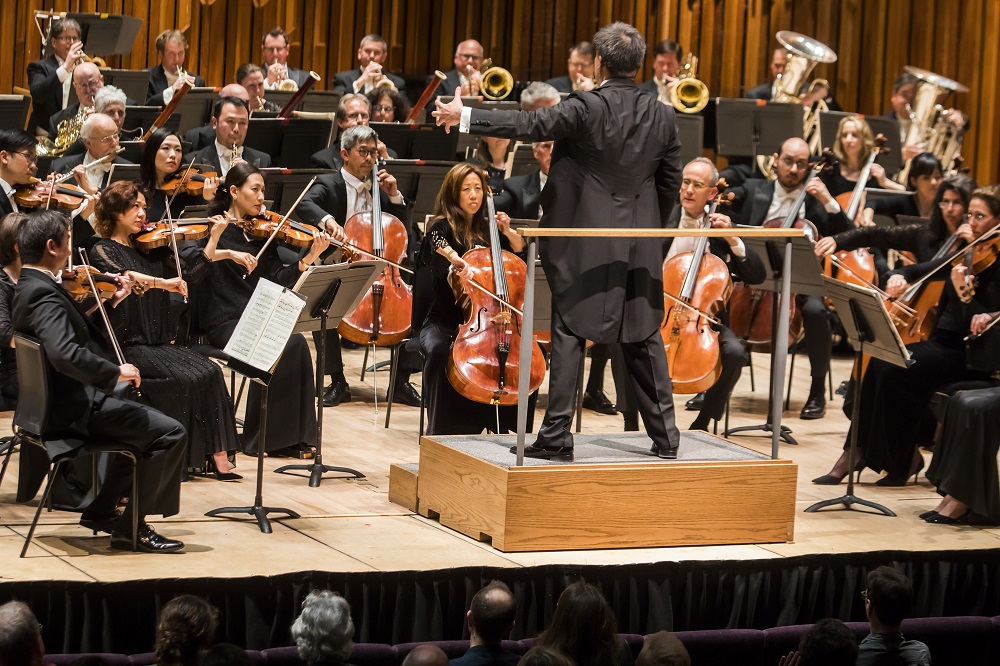
Detail and phrasing were impeccable. How often have you noticed the quirky things Berlioz does with his double bass lines? The NYP's magnificent eight created the weight of double that number, but always with total clarity. Above them the violins flickered with fullest dynamic variety; it's a slightly steely sound, and the one thing it seems they can't do is ethereal-light, but that apart they were as impressive as the lower strings. And the brass, New York's crowning glory: what depth of sonority - yes, even in the Barbican - to create the thrills in the fevered brain of Berlioz's opium-eater. That was enough to make the March to the Scaffold and the Witches' Sabbath scorch. Maybe Gilbert missed the last degree of dementedness in the final orgy, but he made up for that in the final flares of the encore, the Rákóczi March from The Damnation of Faust.
For utter consistency, the bis should have been the Queen Mab Scherzo from Berlioz's Romeo and Juliet, the thistledown counterpart to Adams's monster Beethovenian romp. That was prefaced by three excerpts from the late Beethoven quartets which showed us the mettle of the section leaders named here as the New York Philharmonic Quartet. Concertmaster Frank Huang brought a breath from another planet with the first notes, initiating the first-movement fugal Adagio of Op 131 (we could also have done with a bit of the Grosse Fuge, similarly quoted by Adams in moving counterpoint). After a snatch of that quartet's "chatterbox" scherzo, the cornerstone of Adams' original opening until he decided to replace it with a new 400 bars, we got more of Op 135's Vivace.
If Huang lost pitch briefly in the demonstrations, his lead waxed ever more authoritative in Absolute Jest itself. It's a miracle how Adams combines momentum with a balance that allows the quartet to be heard; even more so, on a third hearing, how profoundly he absorbs his Beethoven models into a whole that forefronts his own identity (and, briefly, Stravinsky's). This may be an incessant entertainer, but it turns out to have depth too. And by providing an alternative to the St Lawrence Quartet, the work's first soloists, the New Yorkers should have given the cue to string players from the London orchestras (as well I know from player visits to a course I ran, the BBC Symphony Orchestra has at least two fine quartets among its players).
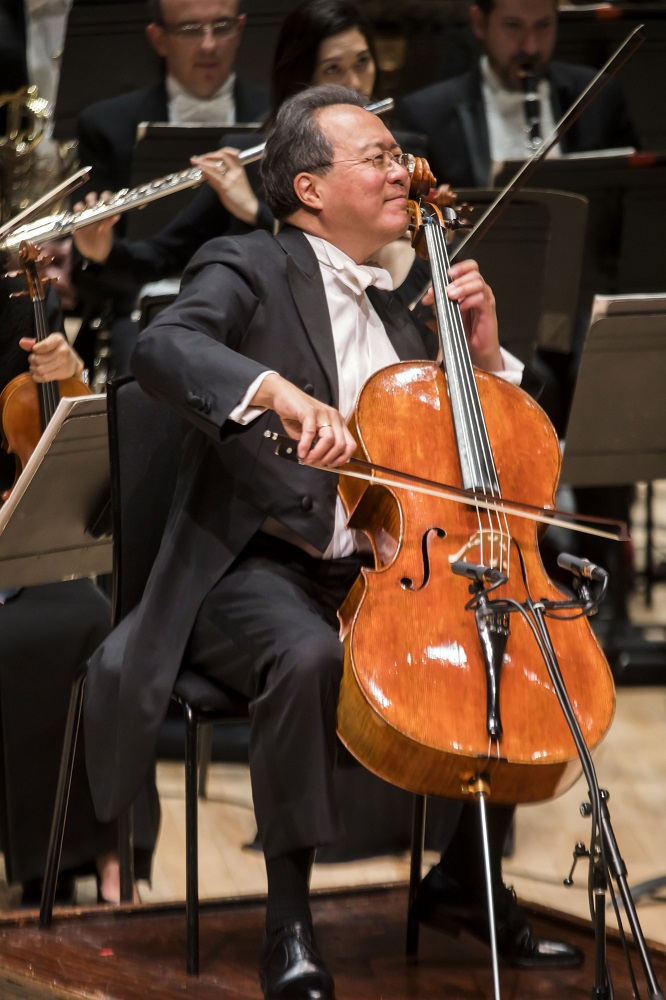 Gilbert held things in check for a while so that the more "fantastique" outbursts could stand out in high profile. He also brought layering and finesse to The Chairman Dances, as alluring and chameleonic a 10-or-so-minute opener as any in the orchestral repertoire. What followed last night, though, was a sore lesson in what Adams does so well, "always...moving forward in space," as Simon Rattle has it, and what a lesser composer can't. Esa-Pekka Salonen may also have entertained us in orchestral scores born of Los Angeles glitz, but his Cello Concerto for that ultimate communicator among instrumentalists Yo-Yo Ma (pictured left) barely justified its existence or the hard work of all the players.
Gilbert held things in check for a while so that the more "fantastique" outbursts could stand out in high profile. He also brought layering and finesse to The Chairman Dances, as alluring and chameleonic a 10-or-so-minute opener as any in the orchestral repertoire. What followed last night, though, was a sore lesson in what Adams does so well, "always...moving forward in space," as Simon Rattle has it, and what a lesser composer can't. Esa-Pekka Salonen may also have entertained us in orchestral scores born of Los Angeles glitz, but his Cello Concerto for that ultimate communicator among instrumentalists Yo-Yo Ma (pictured left) barely justified its existence or the hard work of all the players.
On this evidence - and I doubt if a better case could be made - Salonen's new work, premiered in Chicago a month ago with the composer conducting, has nowhere to go and nothing to say. The primeval gloop of the opening promises well, cellist at first doubling with other players, but then there's just soloistic doodling. The recorded loop effect of the second movement is striking, but hardly new; the dance-finale is all rhythm - excellent work from the percussionist on the bongos - and no substance. Ma's final high B flat, "two centimetres to the left of the highest note of the piano" as Salonen puts it in a programme note more entertaining than the piece, couldn't be heard last night from where I was sitting. Only compare the ending of Prokofiev's Symphony-Concerto for cello and orchestra, where the cellist whistles through a gap in heaven's gate, for the difference between a gimmicky ending and a genuinely exciting, poetic one.
Conservative as it may sound to say so, Prokofiev's or Shostakovich's concertos would have made a better contrast to the Adams pieces; Salonen's soup is comparably thick, and we needed a bit of orchestral sparseness. Nevertheless Harmonielehre, a serious protest against Schoenberg as serialist high priest of musical all-change which nevertheless manages its central dissonance as terrifyingly as Mahler in his Tenth Symphony, proved riveting from start to finish. Endless yearning, infinite flight surface in all three well-balanced movements, and the brass excelled again, both soloistically in Christopher Martin's aching descant for "The Anfortas [sic] Wound" and collectively as machines and individuals hit the stratosphere. A masterpiece, after which no encore was necessary. The New Yorkers could depart with satisfaction for that drink mimed by the genial Gilbert - quite a rarity, a genuinely nice conductor, it would seem - as he walked off the platform for the last time.











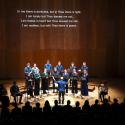
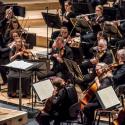
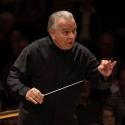
Add comment